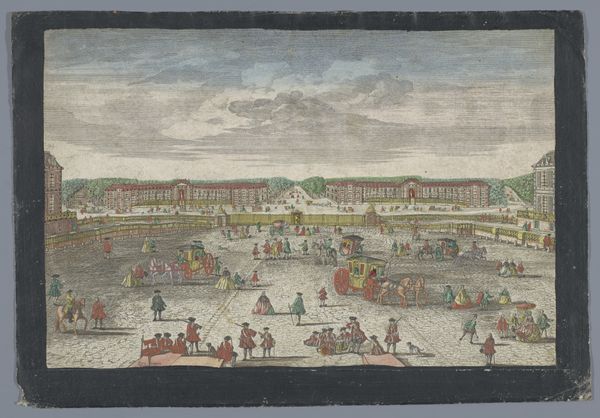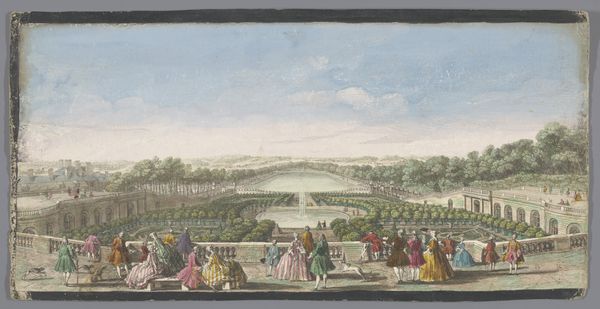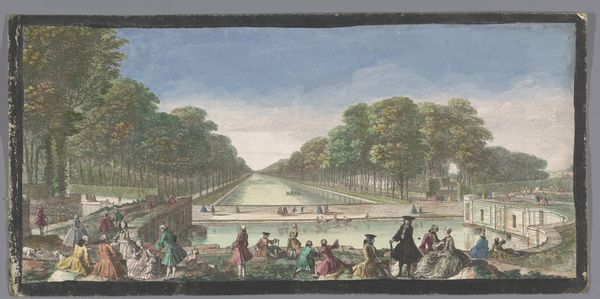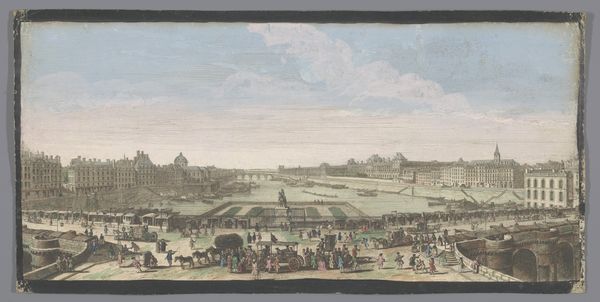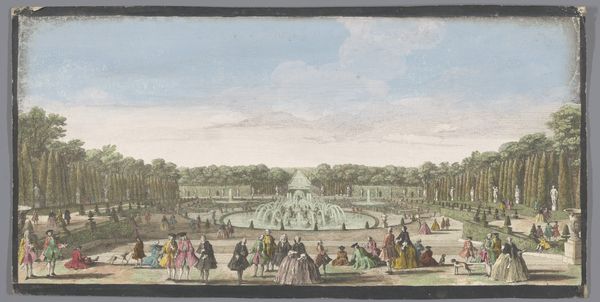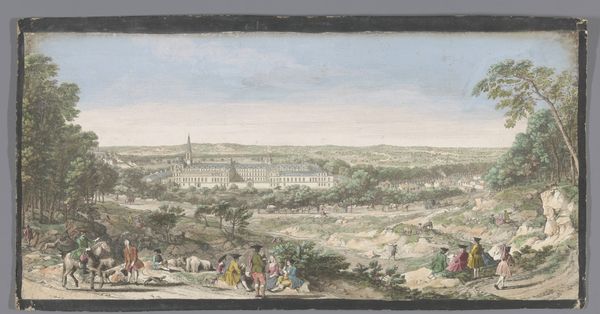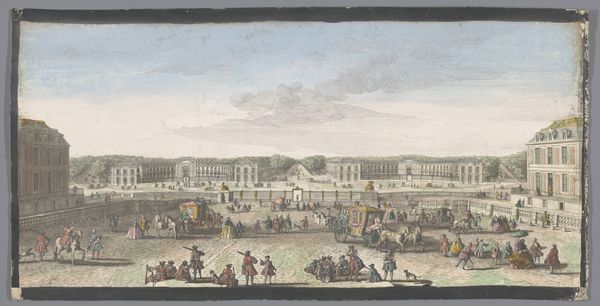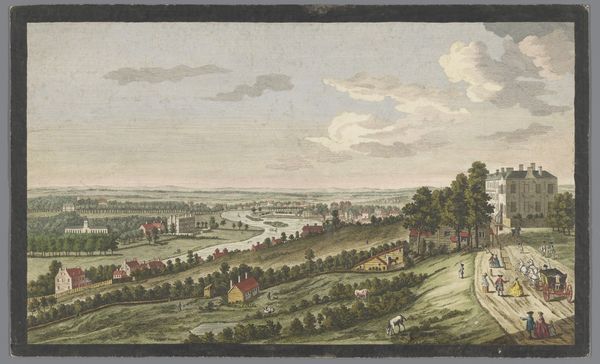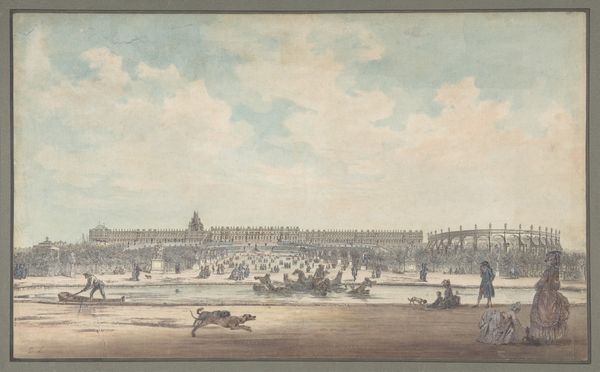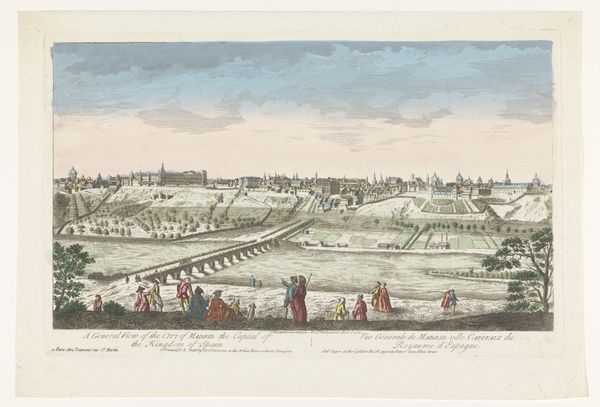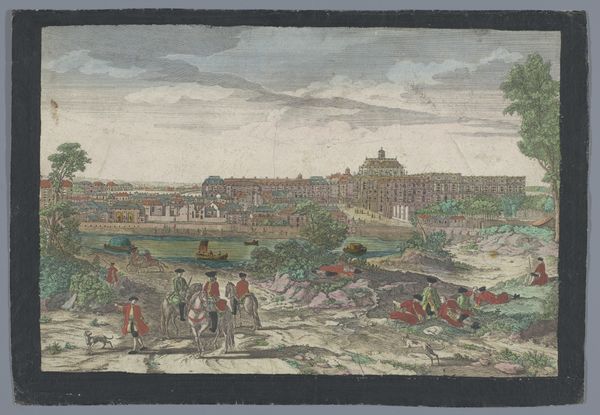
coloured-pencil, watercolor
#
coloured-pencil
#
water colours
#
landscape
#
watercolor
#
coloured pencil
#
underpainting
#
cityscape
#
rococo
Dimensions: height 246 mm, width 472 mm
Copyright: Rijks Museum: Open Domain
Curator: Let's turn our attention to "Gezicht op het Château de Marly," an 18th-century cityscape currently housed at the Rijksmuseum. The artwork, executed with colored pencil and watercolor, captures a scene of courtly life set against an elaborate landscape. Editor: My immediate impression is one of lightness, almost ethereal. The delicate watercolors and Rococo style give it a sense of playful artificiality. Curator: Absolutely. Consider the power dynamics at play. This landscape wasn't a 'natural' scene; it was meticulously engineered. Gardens were spaces where class and gender roles were explicitly performed, reflecting and reinforcing social hierarchies. The gathering itself, with all its visible stratification in dress, is meant to impress upon the viewer the unquestionable supremacy of the aristocratic class and their dominance over all elements, be it the natural environment, labor or common resources. Editor: And the labor involved in creating and maintaining such an elaborate space is rendered invisible. It speaks volumes that the primary medium appears to be watercolor—delicate, refined—rather than something more...grounded. What an immense use of manual skill to execute so smoothly, masking that labour itself in that smooth application of water-based medium! This is more than representation; it's crafted artifice. Curator: Precisely! And we have to acknowledge that such artificiality naturalizes power structures. These picturesque landscapes served as stages for aristocratic performances, reinforcing their social standing in ways that normalized inequality. This isn’t just a pleasing view, it is about creating a spectacle to reinforce existing positions of social power for its patron through a clear hierarchy, while also reinforcing consumer values by displaying an elite group at leisurely recreation! Editor: So, how does understanding its means of production influence our perception? It reveals how elite power and excess can be masked and celebrated through material extravagance and what appears to be delicate simplicity. That even extends to its state today – one must question conservation and who funds such preservation for an object so tied to an aesthetic of wealth. Curator: The material fragility of this piece, and its delicate Rococo style, underscore the transient nature of power. Consider the French Revolution, not long after this work was created – these seemingly unbreakable systems were disrupted. That even a simple scene as captured in a drawing, reminds us today how we consume wealth and celebrate or obfuscate displays of inequitable societal distribution and labour value. Editor: Thinking about process and intent deepens our engagement. Curator: It certainly complicates any simple admiration! It becomes a potent reflection on social constructs of wealth.
Comments
No comments
Be the first to comment and join the conversation on the ultimate creative platform.
